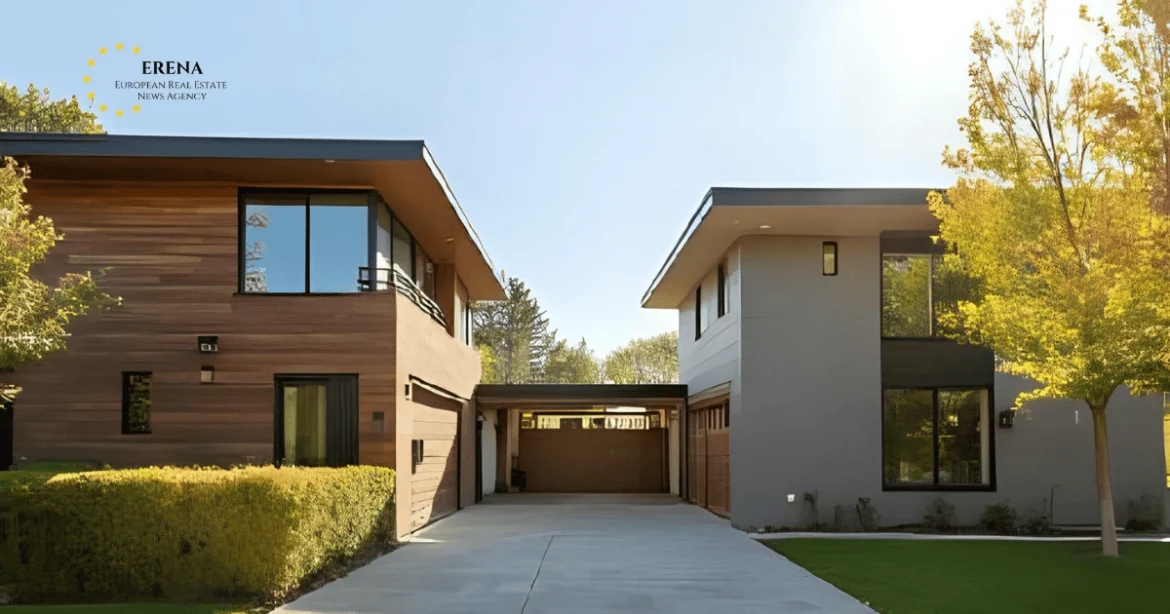Modern couples are rethinking how they live together. Increasingly, partners are exploring the idea of separate but linked homes: two dwellings on the same property, connected by a shared courtyard, terrace, or even a glass walkway. The concept balances privacy with intimacy and reflects broader changes in relationships, work-life balance, and residential design. While still a niche trend, it is gaining attention in Europe, North America, and parts of Asia.
Moving Beyond Traditional Co-Living
The traditional model of sharing every room does not suit everyone. Couples today often seek both connection and autonomy. Separate but linked living extends the “Living Apart Together” (LAT) idea by combining two independent units with intentional shared spaces. This approach supports individuality while keeping emotional closeness intact, offering a more flexible and sustainable form of cohabitation.
Why Couples Are Choosing This Model
Privacy and personal wellbeing
Private space is increasingly recognized as vital for creativity, rest, and mental health. Separate units—whether small apartments, studios, or house wings—allow partners to maintain individuality, reducing everyday friction.
Stronger relationships
When constant proximity is avoided, many couples report less conflict. Time spent together becomes a conscious choice, which strengthens communication and appreciation.
Architectural innovation
Architects across Europe are experimenting with variations of this model.
- In the Netherlands and Belgium, linked houses with shared patios and galleries are appearing.
- In Scandinavia, modular homes can be reconfigured as families grow.
- In Southern Europe, twin villas often share pools or terraces but maintain private interiors.
Exhibitions in cities such as London, Berlin, and Milan have showcased prototypes of dual-entry layouts, mirrored homes, and communal courtyards, reflecting growing design interest.
Cost and Investment Benefits
Separate but connected homes can be more cost-efficient than purchasing two entirely separate properties. Shared land, gardens, and infrastructure such as heating reduce expenses. The model appeals to:
- young couples building first homes,
- older spouses who want more space,
- blended families,
- close friends or co-investors.
One unit may also serve as a rental, guesthouse, or office, adding flexibility and long-term value.
Market Examples in 2025
- Spain (Costa Blanca): twin villas with pools and gardens from around €260,000.
- Germany (Bavaria): modular split homes typically starting near €400,000, though experimental designs appear slightly cheaper in regional towns.
- France (Provence): renovated villas with two wings and shared terraces from about €420,000.
- Italy (Umbria): historic dual-occupancy houses beginning at €390,000.
These properties remain more accessible than prime markets such as Lake Como, the Côte d’Azur, or Amalfi, where prices exceed €5,000–10,000 per m². Linked living provides a lifestyle upgrade without entering ultra-luxury segments.
Where the Trend Is Emerging
Western Europe
In the UK, some couples are buying side-by-side houses and adapting them with shared gardens or courtyards.
North America
Wealthy couples have embraced the concept of “his and her homes.” The rise of Accessory Dwelling Units (ADUs) in California and Canada also supports similar living models.
East Asia
In dense cities such as Tokyo and Seoul, architects are testing micro-units with dual entrances and shared courtyards. These remain pilot projects rather than mainstream housing.
Social and Psychological Dimensions
Therapists suggest that separate but linked living can reduce relationship fatigue, foster respect, and make shared time more intentional. The model is especially appealing to introverts, creatives, or couples who have struggled with traditional cohabitation. Although large-scale studies are lacking, early feedback indicates it may support long-term relationship sustainability.
Technology Enhancements
Smart home technology helps these households function smoothly. Synchronized heating, shared lighting controls, unified security systems, and digital calendars for communal areas simplify coordination. These systems allow couples to enjoy autonomy without logistical complications.
Legal and Practical Considerations
Couples exploring this housing type should consider:
- ownership models (joint or individual titles),
- rules for maintaining shared areas,
- inheritance and succession planning,
- compliance with local zoning laws.
Clear agreements ensure both lifestyle and financial security.
Outlook: From Niche to Wider Adoption
While separate but linked living remains experimental, its visibility is growing. Rising urban density, evolving social norms, and interest in more personalized housing could support broader adoption. Architects and developers are watching closely, with more designs expected to appear at international property expos.
This model may not yet be mainstream, but it highlights how modern housing is evolving to reflect personal choice, autonomy, and emotional sustainability.
Conclusion
Separate but linked homes are less about distance and more about balance. They offer independence, respect, and renewed intimacy while creating financial and architectural flexibility. For couples seeking both closeness and space, this housing trend provides a compelling alternative that could shape the future of modern cohabitation.

